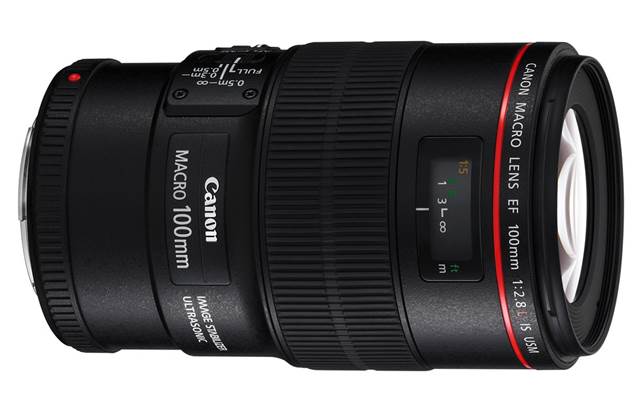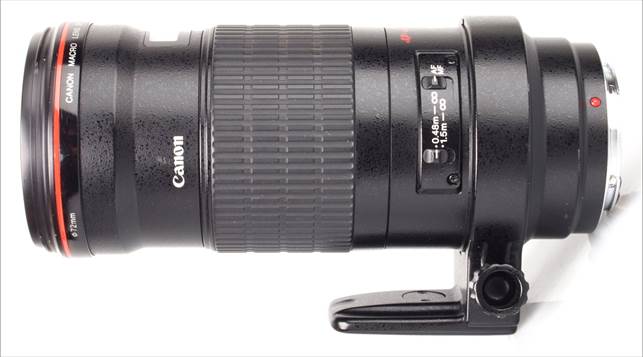A question of distance
The minimum focus distance of macro lenses with the same
magnification factor of 1.0x increases with longer focal lengths. For example,
it’s around 20cm for a 60mm lens, and as much as 48cm for a 180mm lens. These
distances aren’t measured between the object being photographed and the front
of the lens, but rather between the object and the focal plane; this is marked
on the camera body towards its rear, in line with the image sensor.
Some macro lenses also have internal focusing, which can be
a bonus as the front element doesn’t extend when you shorten the focus
distance. In other lenses, the overall length can almost double at the shortest
focus setting. For macro lenses that have shorter focal lengths, this movement
can put the front element of the lens uncomfortably close to the object that’s
being photographed.

A picture shot
with Canon EF 180mm f/3.5L Macro USM
Expert Tip
Just like using telephoto lenses, macro lenses are extremely
prone to camera shake. To make matters worse, you will often want to use narrow
apertures, to ensure you can get as much depth of field as you can. The effects
of shake also become more noticeable the closer you focus. For pin-sharp macro
pictures you’ll almost always need a tripod, particularly if you don’t have
image stabilisation. And the subject needs to keep still too!
Canon EF 100mm f/2.8L Macro IS USM
Less a revamp of Canon’s older EF 100mm f/2.8 lens, this is
a new design with the ‘L’ Luxury badge, boasting top-notch buildquality and
weather seals. The standout feature is a unique ‘hybrid’ image stabiliser:
whereas most IS lenses compensate for regular camera shake or vibration, the
system fitted to this lens also counteracts camera shift in both vertical and horizontal
planes.

Canon EF 100mm
f/2.8L Macro IS USM
Image stabilisation is good for 4 stops in general shooting,
and reduces to 3 stops for 0.5x close-up shooting and 2 stops in full 1.0x
macro mode. At around the 0.5x mark, we consistently got sharp handheld macro
shots from this lens in conditions where it was impossible with any of the
other lenses in the group.
Another improvement compared with the non-stabilised Canon
EF 100mm is that the focus limiter is a three-way switch; this means you can
lock the focus range to the shorter end of its travel or to the longer end, as
well as enabling full focus travel. Optically, the EF 100mm IS works
brilliantly, giving outstanding sharpness and negligible distortion or
chromatic aberrations. For macro shooting, this lens is set to become a
classic.
|
Verdict
·
Price: $1,050 ·
For: Top optical performance and hybrid stabilisation system ·
Against: Expensive, even though it’s much cheaper than at
launch
|
Canon EF 180mm f/3.5L Macro USM
Canon’s longest macro lens, this stillmanages a
reasonably`large maximum aperture of f/3.5, with good build quality, and comes
with a lens hood. However, it lacks the weather sealing rubber O-ring on its
metal mounting plate featured on the 100mm IS L-series macro.
Due to its macro design, with full 1.0x magnification, it’s
bigger and heavier than most 180mm telephoto prime lenses. As such, it comes
with a tripod collar for better balance; this is just as well, since
thecombination of its long 180mm focal length with the lack of image stabilisation
makes a tripod an absolute necessity for macro shooting.

Canon EF 180mm
f/3.5L Macro USM
Like the non-stabilised EF 100mm, you get USM autofocus with
full-time manual override and a focus limit switch – although, again, you can’t
use this to lock the lens to the shorter end of its travel. Autofocus itself
can be quitefast, but we found the autofocus mechanism oftenseemed to hunt
aimlessly or stall completely while trying to lock onto targets. Optical
quality is very good overall, apart from at the smallest aperture of f/32,
where diffraction makes for very soft images.
|
Verdict
·
Price: $1,580 ·
For: Long focal length enables macro shots of distant subjects ·
Against: Blundering autofocus often failed to lock, heavy to
carry
|